ISOLATION BIKING: A skills session for your daily exercise - PART I
So, you're stuck at home? First of all, well done. It really does make a difference to stopping the spread of COVID-19. The sooner we get on top of this the sooner our lives go back to normal.
That being said you can still get your MTB fix, you just need to get creative. Daily exercise is encouraged and even if your trails are closed you can still practice some mountain biking skills on a 20-minute ride around the block.
So with that in mind, here are a bunch of DIY skills for you to get started on.
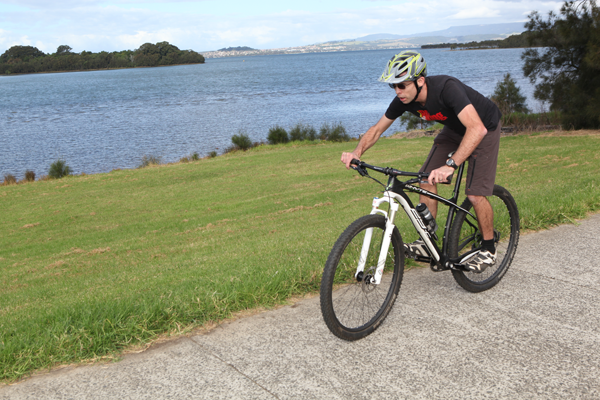
Before you attempt anything that’s even remotely fancy, you need to train yourself to assume a proactive stance on the bike. Sure you can just sit there and plod from point A to B, but whenever you want to actually do something – be it hopping a stick or turning a corner – make sure you get off your backside. Stand with your pedals level, bend your elbows so they stick out and lower your torso so that your weight is centred over the bike. Keep your arms loose and relaxed. This ‘active’ position readies you for anything the trail (or cycle path) can throw at you. It may sound like such a simple thing but it’s easily forgotten—think about it, practice it and you’ll be less likely to slip back into old habits.
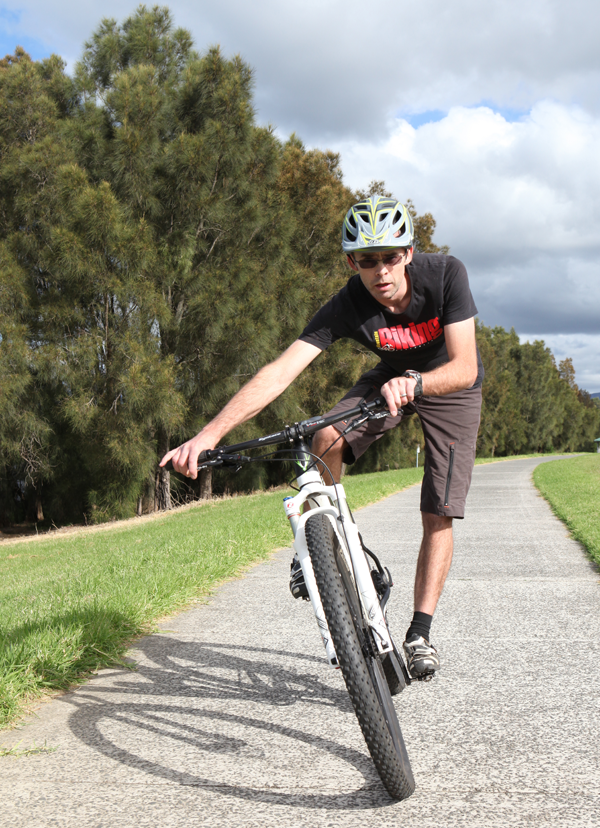
Aggressive cornering (especially on flat or off-camber turns) requires you to move your body independently from the bike. In basic terms, you want to lean the bike while keeping your body more upright. This action places your weight on the outside pedal and helps to drive the side knobs into the ground. All good and well but many riders struggle to free themselves from the bike. Play around and try leaning the bike as far as you can to the side while keeping your body upright—as if you were going to drag the bars on the ground. Do it properly and the saddle will be next to your hips, not under your bum. Learning to free yourself from the bike will help you to become a more active rider and you can do it anywhere.
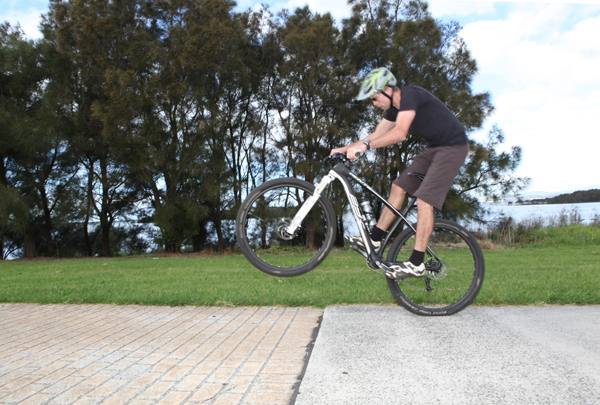
Practice hopping obstacles in safer and less intimidating situations. Pick a crack in the pavement and treat it as if it were a rock or root in the trail. At lower speeds you can hop the front wheel first, then the back wheel in two separate actions. Start with that and get used to timing it so each tyre clears the crack. As you improve, vary the speed and continue to work on the front then rear action, and timing. The better you get, the faster you can go and eventually the two-part lift should meld into one smooth motion. Also practice getting both wheels up simultaneously in a bunny-hop. The front/rear action is better on the trail as it affords more control at lower speeds but it’s good to have both techniques at your disposal. Expand these techniques by applying them to clear real obstacles such as potholes or speed bumps.
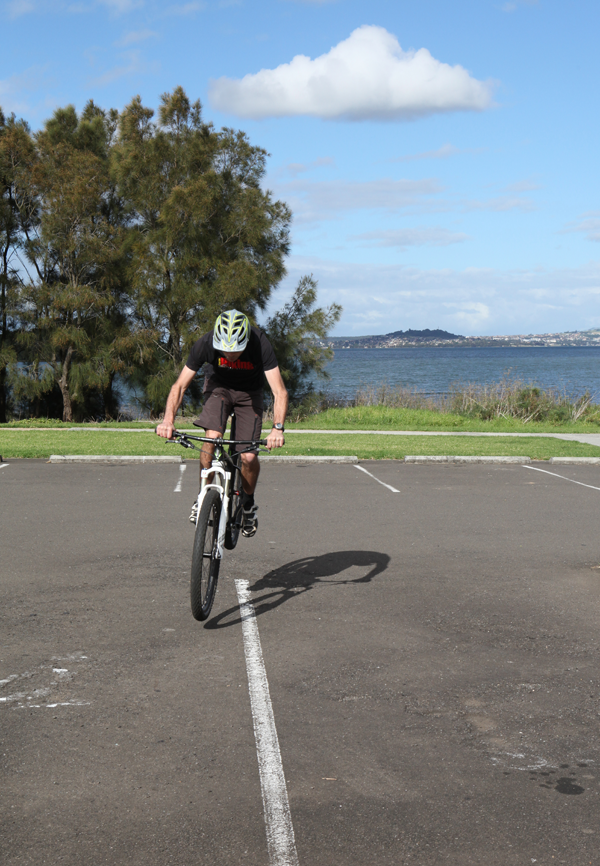
If you’ve got your bunny hop dialled, get creative with it. Use a line on the path or road as a guide. Ride alongside the line and as you pull up for your bunny hop, lunge to the side and try to make your tyres clear the line. On the trail this translates well for clearing ruts or even some diagonal tree roots. Also try the same move with more of a front then rear movement, again hopping from one side to the other.
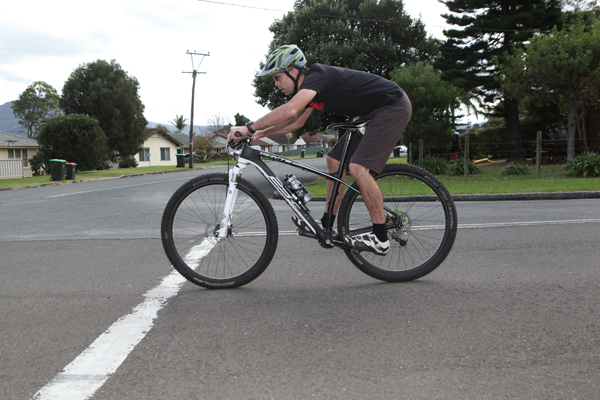
Don’t just stop; see how hard you can stop. Get more familiar with your brakes and the brake bias that provides the best balance of control and stopping power. Try using the back brake only (trust me, it won’t stop you in a hurry). Then try the front brake only. Shift your weight back on the bike as you get more comfortable with hard application of the front brake. For straight-line stopping, in most situations you’ll do best with around 80% of your effort directed towards the front brake and 20% on the rear. Don’t just shift your weight back, get low over the bike, drop your heels and put your weight into the pedals. Aim to stop as fast as possible without skidding.
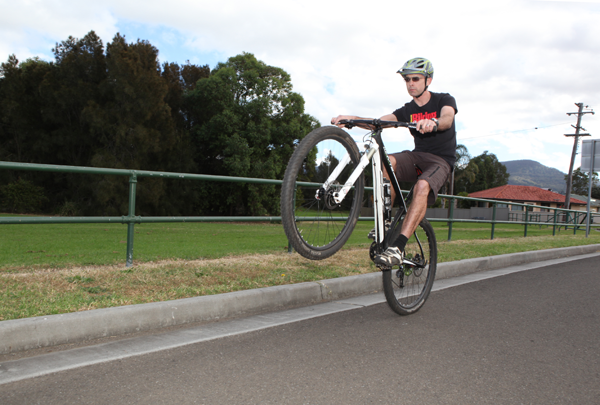
Wheelie practice is a great way to entertain yourself whilst commuting. Find a gentle uphill and select a gear that’s low enough to promote good acceleration but not so low that you run out of puff instantly. Place your sit bones towards the back of the saddle and minimise the weight going through your hands—doing this makes the front end want to lift without needing to yank up on the bars. Put in a punchy pedal stroke and if you’re doing it right, the front wheel should pop up off the ground. Now work with it until you get comfortable. practice endlessly and you’ll find the balance point with your bodyweight that lets the wheel stay aloft without mad pedalling. Always hold a finger over the rear brake; if you start to go over backwards, grabbing the brake will plant the front wheel back on the ground. Lightly dragging the back brake can assist and it’s always best to do this with flat pedals rather than clip-ins.
Stay tuned for Part II tomorrow!
One of the best ways to support us is to subscribe! You’ll get your four copies a year delivered as well as digital access. There’s never been a better time to join our MTB-mad community!




